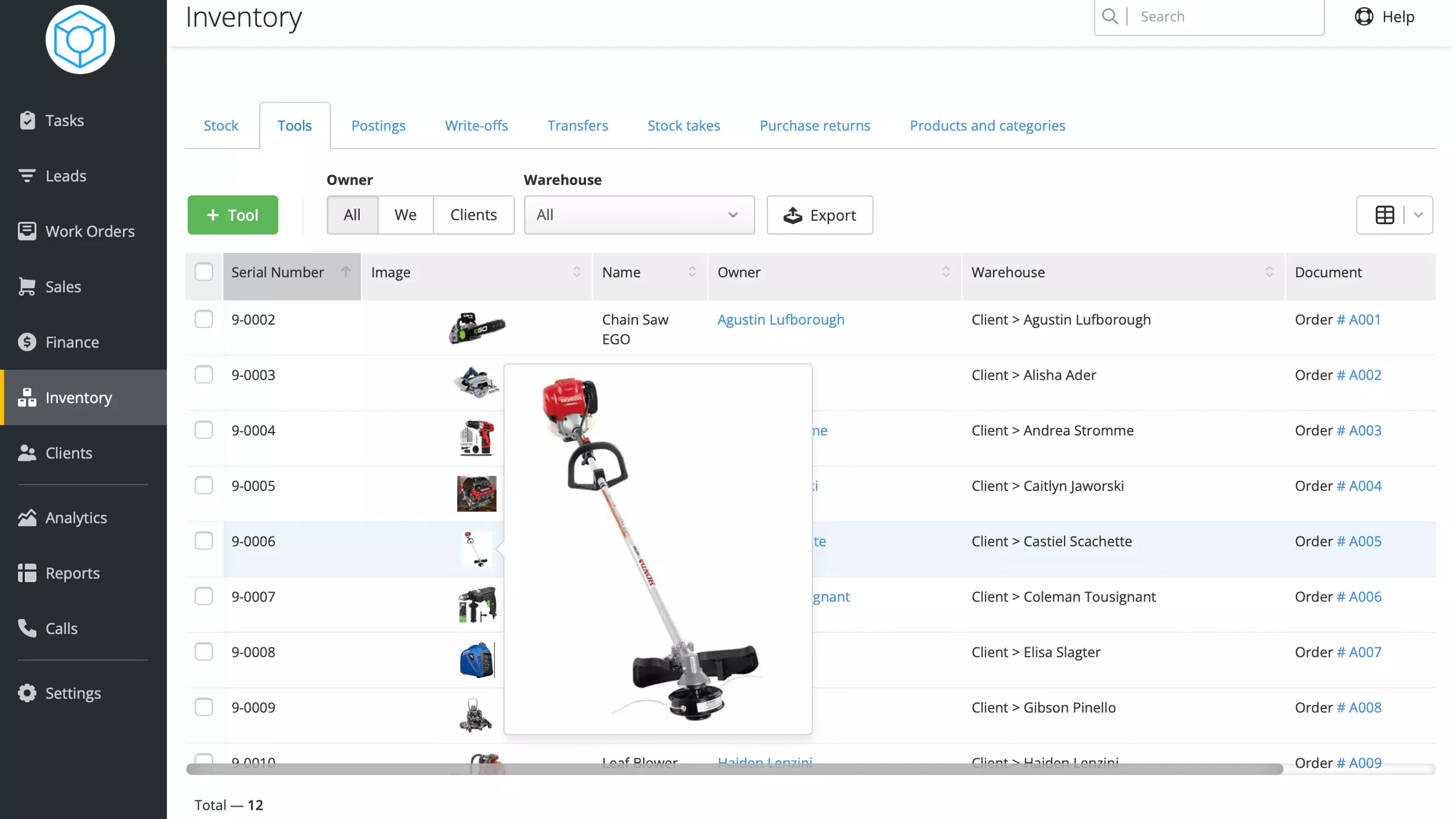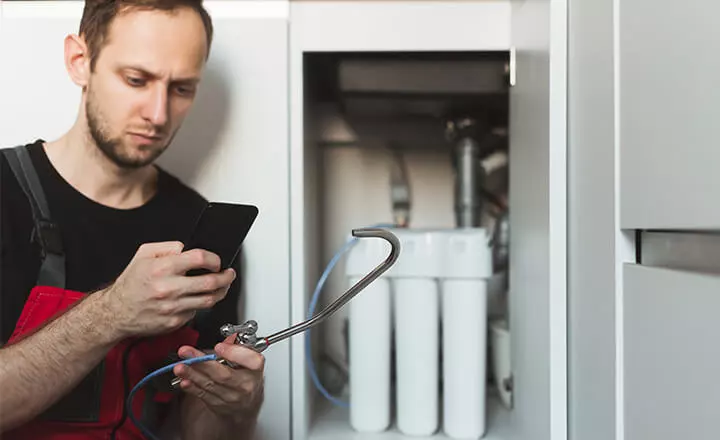Essential Landscaping Tools And Equipment Every Professional Landscaper Should Buy
Your business needs practical landscaping tools to provide quality lawn care & maintenance services. Let’s find out in this blog post what to look out for and how to make this investment worth every penny spent.
Table of Contents
6 Essential Gardening Tools That Make Landscaper’s Job Easier
5 Must-Have Pieces You Should Have on Your Lawn Care Equipment List
Safety Tips to Eliminate the Risk of Occupational Injuries
How to Choose the Best Commercial Landscaping Equipment
How to Take Good Care of Your Specialized Tools & Equipment
Final Thoughts
Having the right garden tools and equipment can be the difference between success and failure for any landscaping project. Professional landscapers are familiar with the basics, such as spades, lawnmowers, and pruning shears. However, other equipment can save you much more time and money.
This article will provide you with all the essential landscaping tools and equipment required for a successful business — from proper attire to specialized machinery. By being aware of what selection of tools is available in the market today, you can make sound decisions when investing in your business.
6 Essential Gardening Tools That Make Landscaper’s Job Easier
From shovels and rakes to pruners and loppers, some indispensable low-tech tools will help make any garden look like its best version all year round. Let’s explore some of the must-have tools professional landscapers use to keep their gardens looking beautiful no matter what comes their way.
-
Garden Shovels
With a broad scoop at the end of a long handle, this tool is used for digging and moving soil in gardening and landscaping work. When selecting one, prefer ergonomic handles so you won’t get tired too quickly. -
Garden hose
It is a flexible tube to transport water for lawn and garden projects. It is typically made of plastic or rubber and can be either coiled or straight. Garden hoses are available in various lengths and diameters depending on the intended use. -
Leaf rake
A leaf rake is a long-handled tool used to gather and move leaves, mulch, and other debris on lawns and other terrains. The head of the rake usually has tines that are separated to create a fan shape to disperse material over a wide area efficiently. -
Wheelbarrow
A wheelbarrow is a hand-propelled vehicle consisting of a single wheel in the front and two handles in the rear, used for carrying loads or other materials. -
Landscape tamper
A tamper is used to flatten land, fill in depressions, tamp down debris, and shape soil when creating landscapes. It typically consists of a heavy metal plate attached to one end of a longwooden handle or pole. -
Pruning Shears
These specialized tools are used for cutting and shaping live plants, shrubs, and other foliage. They have a sharp blade on one end to make precise cuts in stems and branches, while the other is shaped like a handle that provides leverage to help with cutting.
5 Must-Have Pieces You Should Have on Your Lawn Care Equipment List
For professionals, hand tools, even the best ones, are not enough to get ahead of jobs. Consider investing in the following power tools and equipment always to be effective on site:
-
Mower
A lawn mower is a machine that cuts grass to an even height. The most common type is a walking-behind, propelled by a gasoline-powered internal combustion engine. -
Trimmer
A trimmer for landscaping is used to trim and shape trees, hedges, and other foliage. It typically consists of a motor-powered head with a cutting blade at the end and is operated by hand. The motor can be electric or gas-powered, or it may be cordless for convenience. -
Leaf Blower
A gas-powered or electric leaf blower is a gardening tool that uses a concentrated blast of air to blow away leaves and other debris from hard surfaces. The air is typically propelled by gas or electric motors and may be either handheld or in backpack form. -
Edging tools
Edging tools are gardening tools used for creating and maintaining precise edges around plant beds, pathways, or other decorative features in a landscape. They include edgers, shears, weeders, and trimmers. -
Lawn Aerator
A lawn aerator is a mechanical device to puncture and loosen the soil to improve drainage. This is often done on lawns and gardens to promote healthy grass growth, allowing air, water, and other nutrients to reach deep into the turf's root system.
Safety Tips to Eliminate the Risk of Occupational Injuries
As a professional landscaper, you know there is an inherent risk of injuries daily. From chainsaw mishaps to sprained ankles to bug bites and sunburns, landscaping is a dangerous job. But there are numerous steps that you can take to minimize your risk of injury:
Wear Protective Gear
One of the best ways to ensure occupational safety is by wearing protective equipment such as helmets, gloves, ear protection, and face guards. This helps protect workers from sharp objects and flying debris.
Take Breaks During Working Hours
Regular breaks during working hours will help ensure your body isn't overworked or pushed too hard and risk potential strain or fatigue-related injuries. It's vital to ensure that you're getting adequate rest in between shifts while giving yourself enough time to recharge to stay productive throughout the rest of your day.
Learn Proper Lifting Techniques
It's easy to forget sometimes, but lifting heavy equipment incorrectly can lead to serious back injuries if not done correctly. Therefore landscaping workers must learn proper lifting techniques to limit their chances of being injured while on the job. Make sure you always lift with your legs instead of your back, as this puts less strain on your spine when lifting heavy items like tree limbs, rocks, and soil bags.
Implement Use Machinery Safety Protocols
To avoid crushing or even fatal injuries, every landscaper should carefully understand how the equipment works, check for any potential hazards before starting its operation and follow any instructions on electrical safety listed in its user manual.
How to Choose the Best Commercial Landscaping Equipment
You must consider certain factors to ensure you get the most out of your purchase. Here’s a list of steps to follow when searching for the optimal landscaping equipment for your business:
- Determine Your Budget
Consider the size and scope of the job and determine how much money you can realistically invest in new or used equipment. Knowing your budget upfront will help narrow down your selection process and make it easier to decide what suits your needs most effectively. - Find a Reliable Dealer
When selecting a dealer, look for one with experience in the industry who can offer quality advice and reliable service. It’s also important to ensure they have good access to parts if you need them later. Check their reviews online and ask around to find out if people are satisfied with their product offerings as well as their customer service. - Choose Quality Products
Look for equipment from reputable brands with high-quality components that can endure frequent use and heavy workloads over extended periods without breaking down or requiring maintenance or repair too soon after purchase. Asking around within your network for trusted brand recommendations is often a great place to start when choosing quality products and long-term satisfaction. - Check the Accessories Available
Ensure whatever machine you invest in is compatible with any additional attachments that are readily available. Specific equipment may feature additional components or attachments that save time, improve performance or increase maneuverability – all elements that could boost efficiency onsite. - Look Into Warranties
For expensive commercial landscaping equipment, look into warranties available such as extended repair coverage plans and repair part deals offered directly by manufacturers, which can prove more cost-effective than short-span repairs caused by unexpected breakdowns over time.
How to Take Good Care of Your Specialized Tools & Equipment
When it comes to lawn care, having the right tools for the job is essential. But even if you have all the necessary resources, they won't last through the season if you don’t take good care of them. To get the most from your lawn care tools, follow these steps:
Clean Tools After Use
Wip your garden tools down with a wet cloth and buff off any dirt or grime with a dry cloth before storing them away. This will help extend their lifespan and prevent rust and corrosion.
Sharpen Blades Regularly
You must have sharp blades on garden shears, pruning saws, lopper blades, hedge trimmers, and mower blades all the time to do your job efficiently. Sharpen them at least once a season (and more often if possible). Dull blades can tear up plants instead of making clean cuts that promote healthier growth.
Keep Tools Organized
Organizing your tools in an easy-to-reach space helps ensure that you can always find what you need quickly when needed, as opposed to having to search around for them or rummage through drawers in frustration just before starting a job. Keep shovels, hoes, and other long-handled tools upright to save space and reduce handle wear.
Automate Inventory Management Tasks
You need to automate your inventory management system to accurately and efficiently track landscaping tools, machines, and vehicles. E.g., if you use Orderry to manage your landscaping business, you can create individual digital warehouses for each group of your business assets. Avoid costly errors, improve employee productivity, and get the most out of your investment by digitizing processes like tracking, maintenance scheduling, and controlling consumables usage.

Screenshot of an asset warehouse in Orderry
Store Cords Out Of Reach
Keep cords wrapped up securely when not in use to avoid damage and provide protection from inclement weather conditions such as rain or wind. Doing this also makes storage much easier because corded landscaping tools tend to take up more space than most battery-powered ones do.
Fill Fuel Tanks Before Storing
For gas-powered landscaping tools like leaf blowers, chainsaws, and trimmers – fill fuel tanks before storing them away for the winter months, so they stay lubricated while not being used during that inactivity, but make sure oil levels are checked first, too.
Final Thoughts
Even if you have an eye for design and know exactly what plants will work in a specific space, it's crucial to have the appropriate equipment and toolset. Use the list of essentials described above to create lasting beauty through the seasons while staying efficient and productive.



